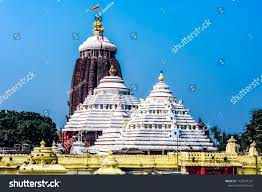The Jagannath Mandir An important Hindu Mandir Dedicated to Jagannath
- mohd Lareb
- Sep 17, 2022
- 2 min read
The Jagannath Mandir is a significant Hindu sanctuary committed to Jagannath, a type of Vishnu - one of the trinity of preeminent heavenliness in Hinduism, Puri in the territory of Odisha on the eastern shore of India. The current sanctuary was revamped from the tenth century onwards, on the site of prior sanctuaries in the compound yet not the principal of Jagannath mandir, and started by Anantavarman Chodaganga, the primary ruler of the Eastern Ganga line.

The Puri sanctuary is renowned for its yearly Ratha Yatra, or chariot celebration, in which the three head gods pulled on gigantic and extravagantly brightened sanctuary vehicles. Not unlike all the stone and metal symbols tracked down in most Hindu sanctuaries, the picture of Jagannath (which gave its name to the English expression 'juggernaut' is made of wood and is ceremoniously supplanted every twelve or 19 years by a reproduction. It is one of the Singe Dham journey locales.The Jagannath temple Delhi is holy to all Hindus and particularly in those of the Vaishnava customs. Numerous incredible Vaishnava holy people, like Ramanujacharya, Madhvacharya, Nimbarkacharya, Vallabhacharya, and Ramananda related intimately to the temple. Ramanuja laid out the Emar Mutt close to the temple, and Adi Shankaracharya laid out the Govardhan Math, a seat of one of the four Shankaracharyas. It is additionally of specific importance to the supporters of Gaudiya Vaishnavism, whose pioneer, Chaitanya Mahaprabhu, was drawn to the divinity Jagannath and lived in Puri for a long time.

The temple was worked by the Ganga administration ruler Anantavarman Chodaganga in the twelfth century CE, as recommended by the Kendupatna copper-plate engraving of his relative Narasimhadeva II. Anantavarman was initially a Shaivite and turned into a Vaishnavite after vanquishing the Utkala locale (where the temple was situated) in 1112 CE. An 1134 to 1135 CE engraving records his gift to the temple. Hence, sanctuary development probably began after 1112 CE.Drawing of Puri Sanctuary from the book, Linde Des Rajahs Journey Dans Linde Centrale, As per a story in the sanctuary narratives, it found by Anangabhima-deva II: various annals differently notice the extended time of development as 1196, 1197, 1205, 1216, or 1226. These propose that the sanctuary's development was finished or that the temple was remodeled during the rule of Anantavarman's child Anangabhima. The Jagannath temple near me complexes further evolved during the Ruled of the ensuing lords, including those of the Ganga line and the Gajapati tradition.Jagannath, Balabhadra, and Subhadra are triplets of gods revered at the sanctuary. The inward sanctum of the temple contains sculptures of these three Divine beings cut from hallowed neem logs known as Daru sitting on the bejeweled stage or ratnabedi, alongside Sculptures of Sudarshana Chakra, Madanmohan, Sridevi, and Vishwadhatri. The divinities are enhanced with various apparel and gems as indicated by the season. Love of these gods pre-dates the structure of the sanctuary and may have begun in an old ancestral hallowed place.




Comments